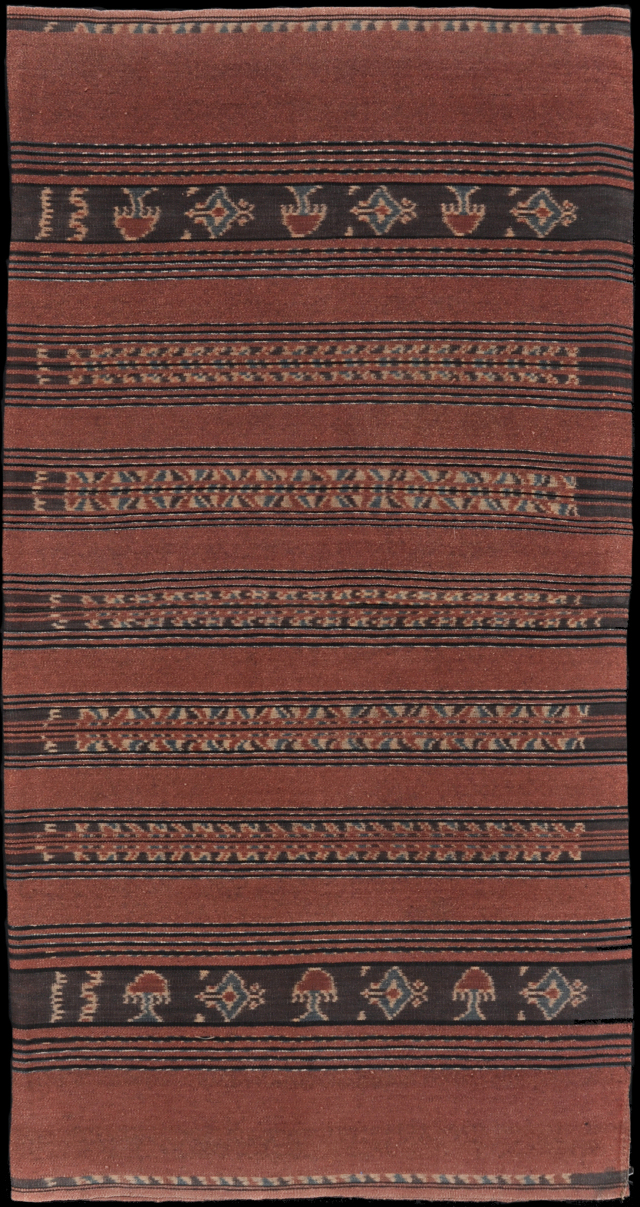| |
167 Solor Archipelago, Ternate and Buaya
Kewatek (sarong)  
|
| Locale: | Buaya or Ternate (precise identification impossible due to stylistic similarity). |
| Period: | Circa 1950 |
| Yarn: | Cotton, hand-spun, coarse for the field, commercial cotton four-ply for the ikated bands. |
| Technique: | Warp ikat |
| Panels: | 2 |
| Size: | 73.5 x 132 cm (2' 4" x 4' 3") LW: 1.80 |
| Weight: | 680 g (24.0 oz), 350 g/m2 (1.15 oz/ft2) |
| Design: | Seven ikated bands, the two widest ornamented with jellyfish, snakes and mamuli the omega shaped earrings that symbolize the vagina and in many parts of the archipelago are a desired part of bridewealth; five narrower ikated bands. Depicting aquatic animals other than stingray is typical for Ternate and Buaya, the tiny islands between Pantar and Alor. |
| Comment: | Vintage sarong showing signs of wear but in excellent condition. While modern ikat textiles from Buaya and Ternate are common, older pieces are rare. The plain bands were done in hand spun cotton, the ikated bands in what appears to be 'benang belanda', used quadruple-ply. This combination gives the cloth a sturdy, rustic feel while the drawing is fine. The muted colours are all natural. The curious pinkish purple tone may have been achieved by adding the purple dye made from dark sponges, kula kemuning, or the pink dye made from sea urchins that Aja Bordeville reports being used in the area. Ex collection Krista Knirck-Bumke. |
| Background: | Chapters on Solor Archipelago and Ternate and Buaya. |
| Published: | Ikat Textiles of the Indonesian Archipelago, 2018.
|
| Compare: | 247 338 |
| Sources: | Similar to field-collected vintage Pantar sarong in collection Aja Bordeville in the division of the field, with seven ikat bands, two of them markedly wider than the others, and the narrow borders with wavy pattern. Similar to Buaya sarong seen on visit to the region in the early 1980s but not acquired. Similar to sarong collected on Buaya by Linda S. McIntosh in 2019, shown below.
 |
| |

©Peter ten Hoopen, 2025
All rights reserved.
|


